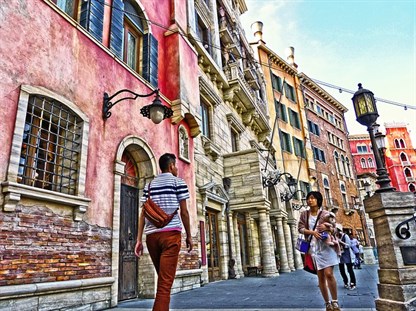Creating a Hotel & Hospitality Localization Strategy
Of all the industries that require content translation and localization to reach their global audiences, none require as much finesse and subtlety as the hotel and hospitality industry. This industry is global and almost always international. Whether we are considering global hotel chains or smaller boutique hotels, at some point they all have to address language barriers and challenges.
The hotel and hospitality industry is very special and one that is dear to my heart as traveling remains one of my true passions. Visiting foreign places, trying out new restaurants and staying at the latest boutique hotels are some of the true pleasures in my life.

During my many travels I have seen my share of translations that were at best mediocre and at worst cringe worthy. As a practitioner, I can’t help but notice when literal translations do not convey the right meaning, don’t engage their audience effectively and miss the mark in regards to cultural correctness and appeal. The saying language is an art is never truer then when one looks at content that has been skillfully localized and beautifully copy written on a hotel website or restaurant menu. Basic translation informs, but true localization appeals to the senses and evokes the same deep sentiments that its source language counterpart aims to do.
External vs. Internal Communication
Hotel and hospitality localization is not one-size-fits-all as the language needs of this industry can be two-fold: internal communication that requires localization to support a multilingual staff and external communication that serves customers.
Examples of internal communication requiring translation include:
- Operations manuals
- Contracts and other legal documents
- Online training modules
- HR handbooks
- Safety procedures
- Memos and internal newsletters
- Job postings
Examples of external communication requiring translation include:
- Menus
- Brochures
- Booking engines
- Hotel and restaurant websites
- Promotions
- Advertisements
- Customer reviews
Choosing the Correct Localization Resources
Internal communication’s primary purpose is to inform and educate the workforce that it was developed for. Hotels and restaurants may have staff that do not speak or fully understand the content’s source language and they require a translation that is easy to understand and concise.
External communication requires a skillful and masterful localization team comprised of subject matter experts who truly understand the industry jargon and your brand messaging. Translators, editors and copywriters work together to produce culturally correct, appealing and persuasive content that makes the consumer feel as if it was written just for them in their own native language. This is not an easy task when dealing with an extremely savvy and picky clientele who can tell the difference between basic translation and polished localized content in a heartbeat.
Some Helpful Tips for Hotel & Hospitality Localization
- Know your target locale. If you are translating your website and targeting one specific country, make sure to use the appropriate language locale (ie: Spanish for Spain vs. Spanish for Mexico) and do your research on local searching and buying behaviors.
- When localizing your website, also keep in mind that a robust, language-friendly CMS that supports bi-directional languages and different character sets will help in terms of fully and easily internationalizing the site content to accommodate different dates, numbers, currencies, etc.
- Optimize your web content with global SEO strategies.
- For marketing collateral, make sure to provide and utilize glossaries and style guides in order to ensure accuracy and consistency.
- For promotions, identify travel and vacation seasons and national holidays for each region and adjust your promotions accordingly.
- For restaurant menus, carefully consider ingredients and menu item descriptions as there may not be an equivalent in the target language. Work with your translation team to determine the best terminology to use as this can sometimes mean a complete rewrite, leaving the source term in its native language or transliteration.
- Have a solid review process in place. Make sure your internal language reviewers and external translation teams become best of friends and work as a team. This will help immensely when trying to iron out the challenges that arise from different nuances and interpretations (and limitations) of languages.
Summary
Translating content for the hotel and hospitality industry doesn’t need to be complicated or intimidating, but it does deserve and require your full attention and commitment in order to do it right. Find a trusted translation partner with the necessary subject matter expertise and native-speaking translators, editors and copywriters who reside in-country and fully understand the culture and target audience they are translating for.
Don’t rely on multilingual internal staff to serve as your translation go-to. Chances are they already have other priorities and job responsibilities and since they are not trained translation professionals, they will most likely not be able to work with the latest translation technologies. However, do involve them in the review process as they have invaluable information and knowledge about your brand that will be most helpful to your translation team. This collaborative approach has been proven time and time again to be a huge part of a hospitality brand’s successful localization strategy.
